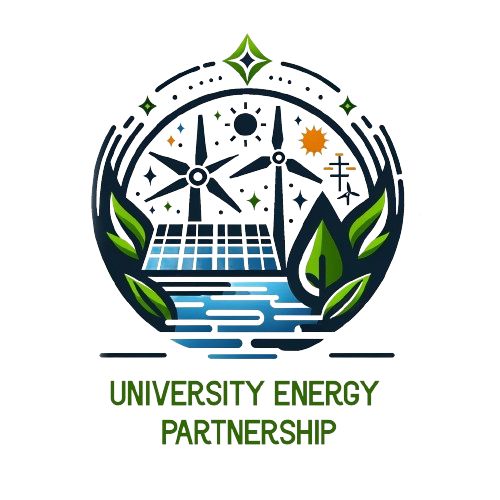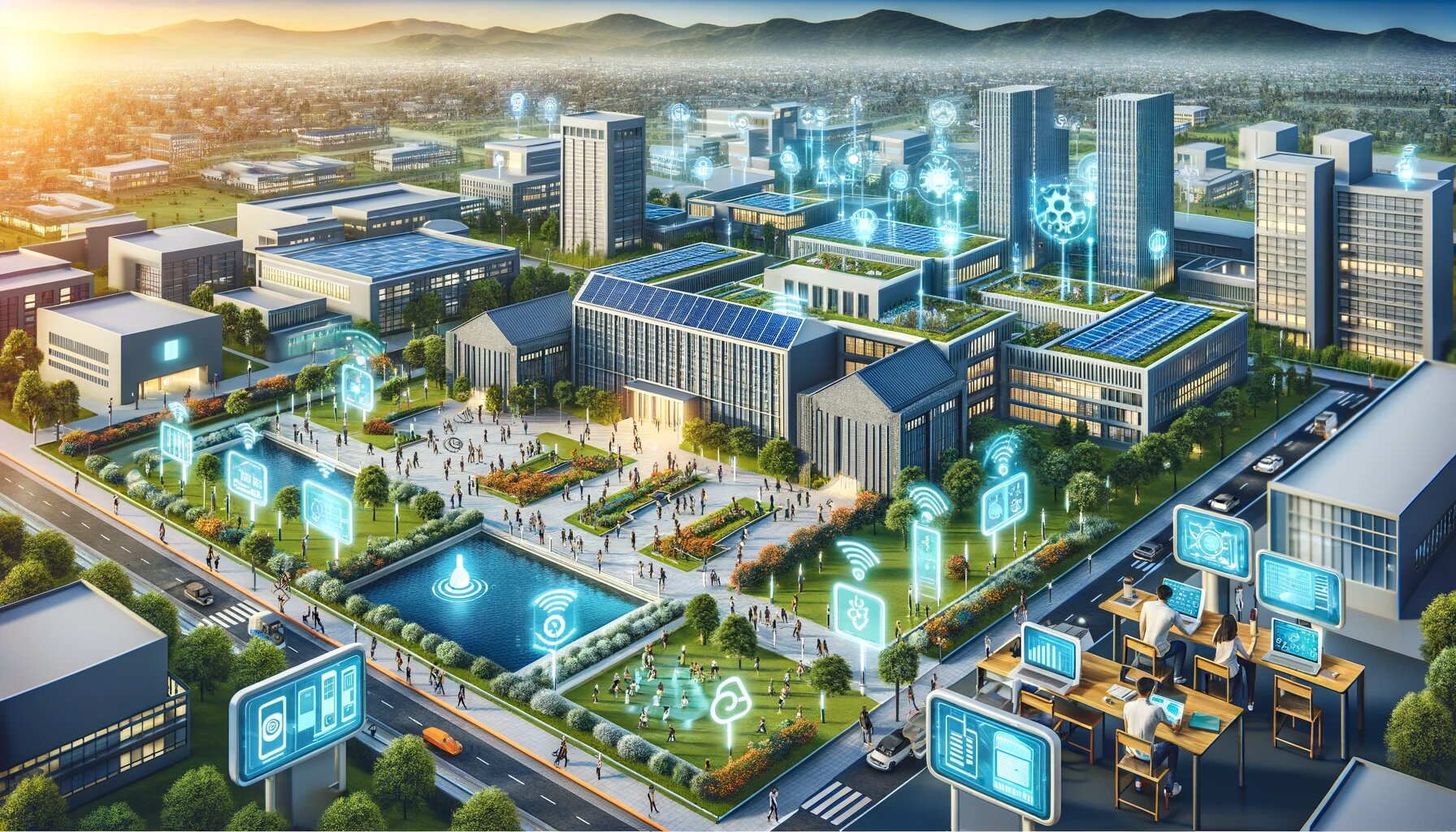Energy efficiency is a critical concern for institutions of higher education, including universities. These institutions consume substantial amounts of energy to power their campuses, including classrooms, laboratories, dormitories, and administrative buildings. As environmental sustainability becomes increasingly important, universities are turning to smart technologies to reduce their carbon footprint and operational costs. This article will explore how smart technologies are being utilized to enhance energy efficiency in universities.
The Importance of Energy Efficiency in Universities
Universities are often sprawling complexes with a high demand for energy. They require electricity for lighting, heating, cooling, and many other activities supporting teaching, research, and daily operations. The environmental impact of universities can be significant, and energy efficiency is a key component in reducing this impact. Here are some reasons why energy efficiency in universities is crucial:
1. Environmental Impact
- Universities are responsible for reducing greenhouse gas emissions and minimizing environmental impact. Energy-efficient practices can help achieve these goals by reducing energy consumption and the associated carbon emissions.
2. Cost Savings
- Energy is a significant expense for universities. By adopting energy-efficient technologies and practices, universities can save money on their utility bills, allowing them to allocate resources to other important initiatives.
3. Educational Opportunities
- Universities have a unique opportunity to educate students about sustainable practices and technologies. By implementing energy-efficient solutions on their campuses, universities can serve as role models for environmentally responsible behavior.
Smart Technologies for Energy Efficiency
Smart technologies play a vital role in improving energy efficiency in universities. These technologies leverage data and automation to optimize energy consumption and reduce waste. Here are some key smart technologies being used in universities:
1. Building Energy Management Systems (BEMS)
BEMS is central to enhancing energy efficiency on university campuses. These systems allow for the centralized monitoring and control of various building systems, including HVAC (Heating, Ventilation, and Air Conditioning), lighting, and more. BEMS uses sensors and data analytics to make real-time adjustments to building operations, ensuring that energy is used efficiently.
2. Smart Lighting
Smart lighting systems use sensors to detect occupancy and natural light levels within a room. They can automatically adjust the intensity of lighting or turn off lights in unoccupied areas. By implementing smart lighting solutions, universities can significantly reduce energy consumption in classrooms, libraries, and offices.
3. Energy-Efficient HVAC Systems
Heating and cooling are major energy consumers in university buildings. Smart HVAC systems can optimize temperature settings based on occupancy and weather conditions. Additionally, predictive maintenance algorithms can help identify and address issues before they lead to system failures, ensuring optimal energy performance.
4. Renewable Energy Integration
Universities are increasingly investing in renewable energy sources such as solar panels and wind turbines. These clean energy sources can help reduce the reliance on fossil fuels and decrease greenhouse gas emissions. Smart technologies can efficiently manage the integration of renewable energy into the campus grid, ensuring a stable and sustainable power supply.
5. Occupancy Monitoring
Understanding how spaces are utilized on campus is crucial for optimizing energy use. Occupancy monitoring systems use sensors and data analytics to track the utilization of classrooms, lecture halls, and other areas. This data helps universities make informed decisions about space allocation and energy management.
6. Energy Dashboards
Transparency is essential in promoting energy efficiency. Energy dashboards provide real-time information on energy consumption and cost trends. By making this data accessible to students, faculty, and staff, universities can raise awareness and encourage behavior that contributes to energy conservation.
The Role of Data Analytics in Energy Efficiency
Data analytics has emerged as a pivotal tool in the pursuit of energy efficiency within universities. By harnessing the power of data, universities can gain deeper insights into their energy consumption patterns and make informed decisions to reduce waste and enhance sustainability. Here, we delve into the significance of data analytics in the context of energy efficiency on campuses.
Predictive Analytics for Maintenance: One of the most notable applications of data analytics is predictive maintenance. Universities manage extensive HVAC systems, lighting networks, and other energy-consuming infrastructure. Predictive analytics employ historical data and sensor information to forecast when equipment might fail or require maintenance. By proactively addressing issues, universities can avoid costly breakdowns and ensure that their systems operate at peak efficiency.
Data-Driven Decision-Making: Data analytics empowers universities to make data-driven decisions regarding energy efficiency upgrades and operational adjustments. By analyzing historical consumption data, institutions can identify areas of high energy use, assess the impact of energy-efficient technologies, and develop strategies for optimizing energy consumption. These insights enable universities to prioritize investments and allocate resources effectively.
Real-Time Monitoring and Control: Universities can continuously monitor and control energy usage with real-time data analytics. Sensors and meters provide a stream of data that can be analyzed in real-time, allowing for immediate adjustments to heating, cooling, and lighting systems. This level of control minimizes energy waste and ensures that resources are utilized efficiently.
In conclusion, data analytics serves as a linchpin in the journey toward energy efficiency in universities. It enables predictive maintenance, facilitates data-driven decision-making, and offers real-time monitoring and control. As technology continues to advance, data analytics will play an even more critical role in optimizing energy consumption, reducing costs, and bolstering sustainability efforts on university campuses.
Case Studies: Universities Embracing Smart Technologies
Several universities around the world have taken significant steps to enhance their energy efficiency through the adoption of smart technologies. Let’s explore a few notable examples:
Stanford University, USA
Stanford University has implemented an advanced BEMS that covers over 600 buildings on its campus. The system uses data analytics to optimize HVAC operations, resulting in substantial energy savings. Additionally, Stanford has invested in solar energy installations, making use of its sunny California location to generate clean electricity.
University of Cambridge, UK
The University of Cambridge has embraced smart lighting technology in its historic buildings. Occupancy sensors and LED lighting have been installed, reducing energy consumption in these heritage structures. The university also employs a BEMS to control heating and cooling systems across its campus.
National University of Singapore (NUS)
NUS is a pioneer in integrating renewable energy into its campus infrastructure. It has installed solar panels on various buildings, generating significant electricity from solar power. NUS also utilizes smart meters and energy dashboards to monitor and manage energy consumption.
Challenges and Future Outlook
While the adoption of smart technologies for energy efficiency in universities is promising, there are challenges that must be addressed:
Initial Costs
- Implementing smart technologies often requires a substantial upfront investment. Universities must carefully assess the long-term cost savings and environmental benefits to justify these expenditures.
Legacy Infrastructure
- Many universities have older buildings with outdated infrastructure. Retrofitting these buildings with smart technologies can be more challenging and costly than implementing them in new construction.
Behavioral Change
- Encouraging students, faculty, and staff to adopt energy-efficient behaviors is crucial to energy conservation. Universities must invest in educational campaigns and incentives to promote sustainable practices.
Looking ahead, the future of energy efficiency in universities appears promising. Advances in technology, decreasing costs of smart solutions, and growing awareness of sustainability issues are likely to drive further adoption of energy-efficient practices. Additionally, universities can serve as testing grounds for innovative energy-saving technologies, contributing to broader efforts to combat climate change.
Summary
Energy efficiency is paramount for universities as they seek to reduce their environmental impact and operational costs. Smart technologies offer a powerful means to achieve these goals by optimizing energy consumption, enhancing monitoring and control, and integrating renewable energy sources. As universities continue to invest in smart technologies and promote sustainable practices, they play a vital role in shaping a more energy-efficient and environmentally responsible future. The adoption of smart technologies for energy efficiency is not only a smart choice for universities but also a valuable lesson for the students and communities they serve.

